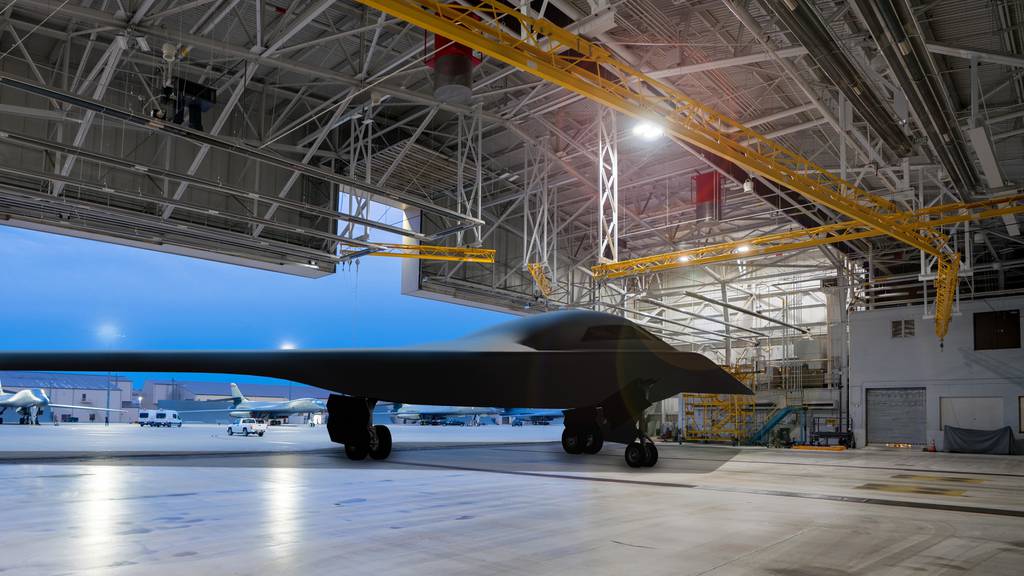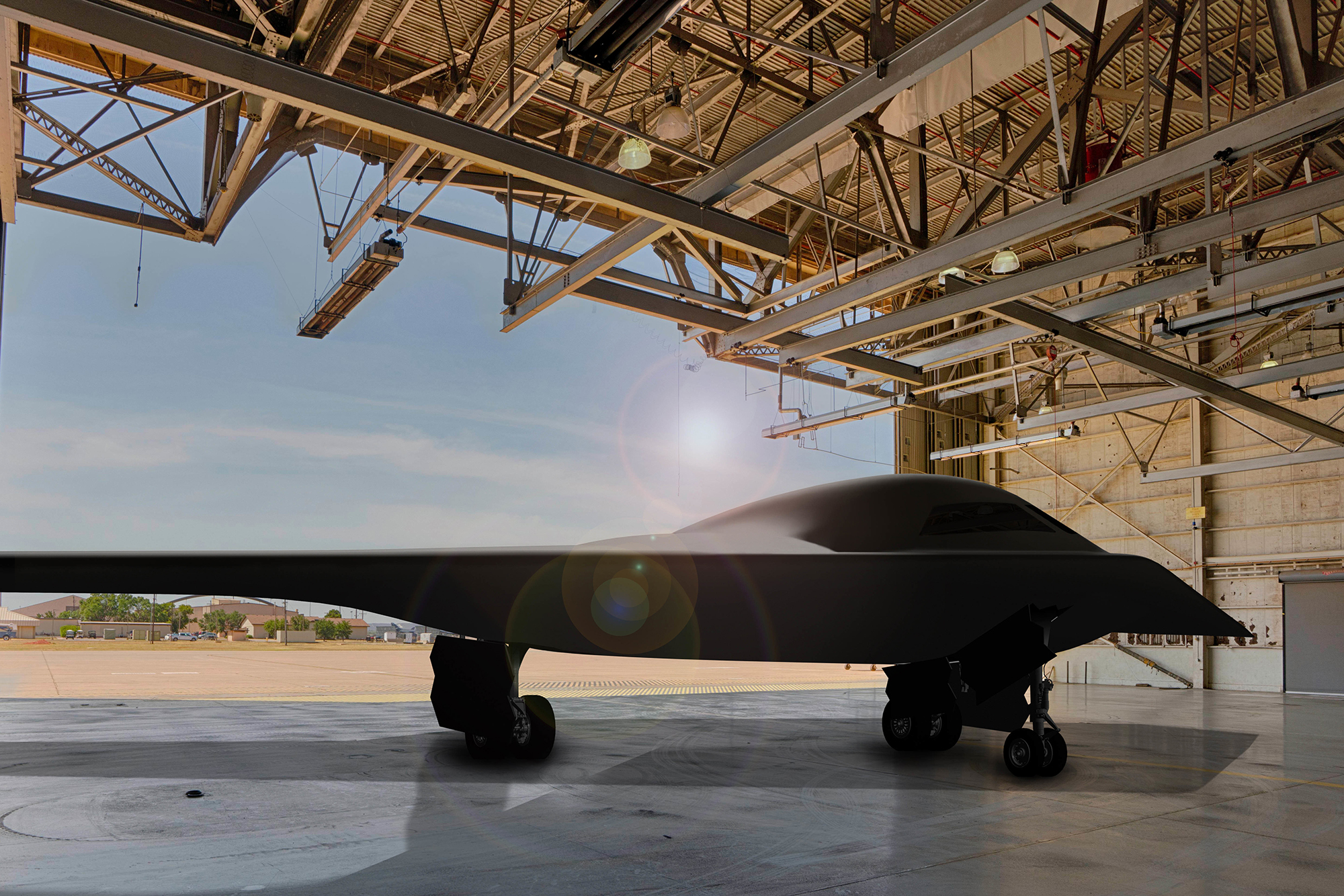- Joined
- 3 June 2011
- Messages
- 17,476
- Reaction score
- 9,371
Sweep angle is not the same. 27 degrees vs 33 for the B-2A.I am amazed at how they keep the wing span and sweep angle the same for all three!
Last edited by a moderator:
Sweep angle is not the same. 27 degrees vs 33 for the B-2A.I am amazed at how they keep the wing span and sweep angle the same for all three!
Just like wingspan - it's not the same (more than 172.00)Sweep angle is not the same. 27 degrees vs 33 for the B-2A.I am amazed at how they keep the wing span and sweep angle the same for all three!
Copying and pasting the entire article is essentially theft. Excerpting and linking is fine. Thanks for readingNorthrop Grumman B-21 Unveiling May Answer Lingering Mysteries
Steve Trimble November 14, 2022
Slightly more than 34 years after the rollout of the Northrop Grumman B-2 Spirit on Nov. 22, 1988, the U.S. Air Force plans to unveil the B-21 Raider to the public on Dec. 2.
The rollout from the company’s Site 4 complex within the Air Force’s Plant 42 in Palmdale, California, will provide the first glimpse of the physical aircraft since the launch of the Long-Range Strike Bomber (LRS-B) program over a decade ago.
The aircraft revealed during the rollout may seem very familiar, however. While most program information is classified, a perhaps surprising amount of detail about the B-21 Raider’s design, performance and capabilities has entered the public domain since the Pentagon awarded the LRS-B contract to Northrop on Oct. 27, 2015.
The Air Force has released three renderings of the bomber since 2016, showing the aircraft as viewed from above and below on the right side and from a level aspect on the left side. By comparison, the service released only a single rendering of the B-2 before its 1988 rollout, revealing its flying-wing shape and distinctive, sawtooth trailing edge.
Although described as falling short of photographic accuracy, the renderings consistently show a flying-wing bomber resembling the B-2’s familiar design, with certain critical differences.
In comparison to the B-2, the released B-21 renderings appear to reveal:
Despite these apparent revelations, the renderings leave many other critical details secret. As the Air Force allows the public to view the bomber for the first time, close observers will be on the lookout for confirmation or clues about the following items:
- Extended, high-aspect-ratio, outboard wing sections compared with the B-2, which may offer improved lift characteristics at high altitude.
- A single W-shaped trailing edge, which appears simplified compared with the double-W, sawtooth shape of the B-2. The latter was added by Northrop late in the B-2’s design phase due to a change in Air Force requirements, which changed to include a low-altitude penetration capability.
- Inboard-canted, wingtop engine inlets. Instead of the B-2’s longitudinally flush, aft-canted inlets, the B-21 appears to deliver airflow to the engines through deeply embedded inboard-canted inlets.
- A three-pane windscreen, including a single, central pane flanked by two upward-sloping, rectangular side windows. By comparison, the B-2 uses four windscreen panels that wrap around the cockpit. Program officials explain that the B-21’s windscreen design will be easier to maintain and should offer better visibility to the pilots during inflight refueling.
- A two-wheel main landing gear. In comparison with the four-wheel bogies on the B-2, the B-21’s half-size gear, if accurately depicted, may indicate a smaller overall aircraft.
[end of excerpt]Northrop Grumman B-21 Unveiling May Answer Lingering Mysteries | Aviation Week Network
The U.S. Air Force has released many details about the mostly classified program, but much about the new stealth bomber remains secretaviationweek.com
Getting a plane about half the payload of B-2, yet identical to B-52, and similar range of B-2, probably with the ability to be stored in conventional hangars, is more or less enough of an advancement. It's also coming in quantity rather than a paltry 20 bombers.
It makes perfect sense as a replacement for B-52 for the nuclear delivery role.
When all the senior citizens stop getting elected and actually new people show up, i.e. Senators who lack the emotional attachment to the old planes, said old planes will go away.
It happened to the Army's Hueys and Cobras it'll happen to B-52 and A-10 too.
When all the senior citizens stop getting elected and actually new people show up, i.e. Senators who lack the emotional attachment to the old planes, said old planes will go away.
It happened to the Army's Hueys and Cobras it'll happen to B-52 and A-10 too.
When all the senior citizens stop getting elected and actually new people show up, i.e. Senators who lack the emotional attachment to the old planes, said old planes will go away.
It happened to the Army's Hueys and Cobras it'll happen to B-52 and A-10 too.
The B-52 will eventually have to be replaced in the not too distant future, what it will be replaced with that is another matter entirely.
When all the senior citizens stop getting elected and actually new people show up, i.e. Senators who lack the emotional attachment to the old planes, said old planes will go away.
It happened to the Army's Hueys and Cobras it'll happen to B-52 and A-10 too.
The B-52 will eventually have to be replaced in the not too distant future, what it will be replaced with that is another matter entirely.
Refurbishing and upgrading airframes is a boon for manufacturers. You will not see a change in voting behavior by Congress whilst the 'river of life' is flowing to reelection coffers.
Boeing, in particular, will be exceptionally motivated to maintain the 'good will' of the peoples representatives. They have an egregious program record.
The Land Down Under the sea: AUKUS is about submarines, not bombers
by Andrew I. Park and Steven Wills, Opinion Contributors - 11/27/22 11:00 AM ET
A recent article by Mitchell Center for Aerospace Studies expert Robert Haddick asserts that the Australian government should acquire the B-21 Raider strategic bomber, instead of the nuclear-powered attack submarines (SSNs) planned under the AUKUS trilateral partnership agreement between Australia, the United Kingdom, and the United States.
The argument, however, does not comport with the fundamentals of the AUKUS partnership and the platform requirements desired by Australia.
As the Australian Defense Minister Richrad Marles explained, “For a three-ocean nation, the heart of deterrence is undersea capability.” While long-range strategic bombers are an important part of nuclear deterrence and conventional strike mission, they are not a stand-alone, independent replacement for a joint force.
Most importantly, Australia is not a great power that maintains a doctrine of employing a long-range strategic bomber against an adversary. A bomber force would present more lifetime costs to the Australians than would a nuclear submarine force. Simply, acquiring the B-21 is not now in the interest of the Australian government.
The U.S. Air Force B-21 Raider is not yet in full rate production, and the cost for 100 such aircraft for the Air Force has been estimated at $203 billion by the Congressional Research Service. Australia might buy, for example, one-third of that amount (30-plus aircraft) but would still face a lifetime cost of $67 billion in U.S. dollars.
The B-21 is still a new platform and no doubt will have “teething” issues, but the Virginia and Astute-class SSNs are mature platforms in full rate production.
Australia is already buying the F-35A as a strike fighter asset and has defined its air defense envelope that acquisition will support. The B-21 does not fit that requirement. The B-21 was examined for Australian use but the nuclear submarine was still the first choice.
Comparing the B-21 and the nuclear submarine option for AUKUS is like comparing apples and oranges.

Has the exact time of the unveiling event been announced anywhere?


Brian Everstine:
They're being very particular about it'll be rolled out and how we're going to look at it, even the time of day. It's going to be rolled out after dusk on the West Coast.
Steve Trimble:
I've checked the time for sunsets, 4:42 PM in Palmdale on December 2nd. So the sun goes down at 4:42 PM. I think you're supposed to arrive around three o'clock for the ceremony.
From the Aviation Week podcast, some estimated timing info. Sounds like the rollout proper will probably happen no earlier than ~1700 PST, which means 2000 EST and 0100 GMT on Saturday. Sorry to our European colleagues.
Brian Everstine:
They're being very particular about it'll be rolled out and how we're going to look at it, even the time of day. It's going to be rolled out after dusk on the West Coast.
Steve Trimble:
I've checked the time for sunsets, 4:42 PM in Palmdale on December 2nd. So the sun goes down at 4:42 PM. I think you're supposed to arrive around three o'clock for the ceremony.
Bummer (I am in Belgium)…From the Aviation Week podcast, some estimated timing info. Sounds like the rollout proper will probably happen no earlier than ~1700 PST, which means 2000 EST and 0100 GMT on Saturday. Sorry to our European colleagues.
Brian Everstine:
They're being very particular about it'll be rolled out and how we're going to look at it, even the time of day. It's going to be rolled out after dusk on the West Coast.
Steve Trimble:
I've checked the time for sunsets, 4:42 PM in Palmdale on December 2nd. So the sun goes down at 4:42 PM. I think you're supposed to arrive around three o'clock for the ceremony.
Bummer (I am in Belgium)…From the Aviation Week podcast, some estimated timing info. Sounds like the rollout proper will probably happen no earlier than ~1700 PST, which means 2000 EST and 0100 GMT on Saturday. Sorry to our European colleagues.
Brian Everstine:
They're being very particular about it'll be rolled out and how we're going to look at it, even the time of day. It's going to be rolled out after dusk on the West Coast.
Steve Trimble:
I've checked the time for sunsets, 4:42 PM in Palmdale on December 2nd. So the sun goes down at 4:42 PM. I think you're supposed to arrive around three o'clock for the ceremony.
Any idea why they do after sunset? (for certain details not to be exposed, I presume?)


From the Aviation Week podcast, some estimated timing info. Sounds like the rollout proper will probably happen no earlier than ~1700 PST, which means 2000 EST and 0100 GMT on Saturday. Sorry to our European colleagues.
Brian Everstine:
They're being very particular about it'll be rolled out and how we're going to look at it, even the time of day. It's going to be rolled out after dusk on the West Coast.
Steve Trimble:
I've checked the time for sunsets, 4:42 PM in Palmdale on December 2nd. So the sun goes down at 4:42 PM. I think you're supposed to arrive around three o'clock for the ceremony.
No worries TomS, it's going to be a lot different than the B-2 unveiling that is for sure.
prob be held inside hangar with cover thrown off???
cheers
prob be held inside hangar with cover thrown off???
cheers
If it was going to be indoors, they wouldn't care about twilight, I'd think.
Judging from the AW&ST podcast, there are going to be a bunch of aircraft there highlighting Northrop Grumman and Doolittle Raider history, not just the B-21.
Which will give a lot of reference objects to compare the B-21 against.
